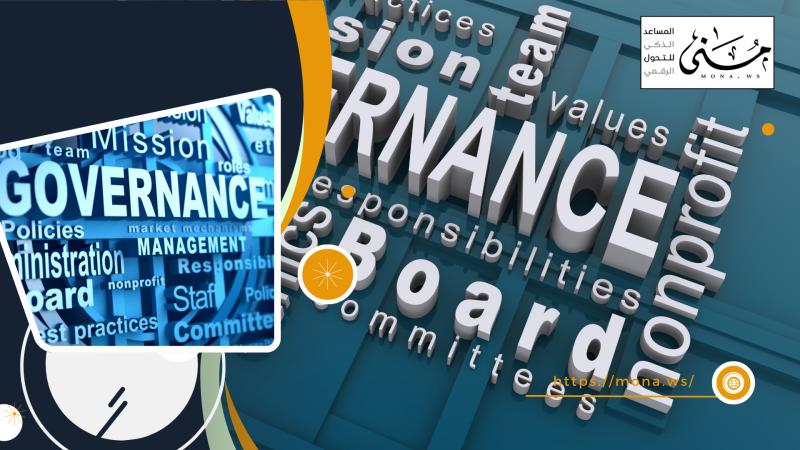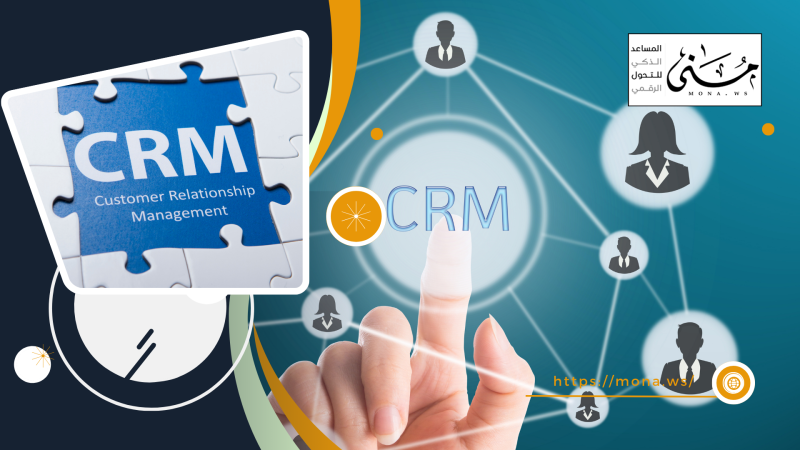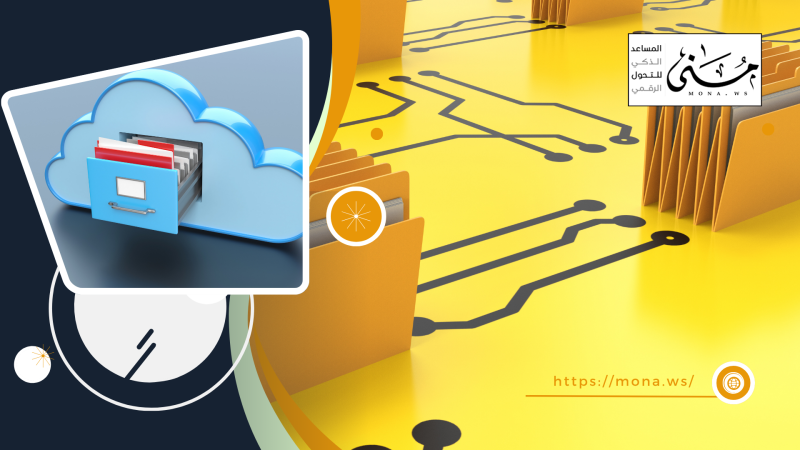At the core of every successful organization lies an efficient correspondence system that manages a daily, uninterrupted flow of incoming and outgoing transactions — whether between internal departments or with external entities. As organizations grow and their operations expand, these transactions evolve from mere document exchanges into critical elements that directly impact decision-making speed, communication quality, and the effectiveness of administrative oversight.
Yet behind this seemingly straightforward process lie hidden challenges that many departments fail to recognize until it’s too late: missing documents, duplicate transaction numbers, unjustified delays, unauthorized access, and decisions stalled by a lost letter in the physical mail or an overloaded inbox.
Why Is Managing Correspondence More Complex Than It Seems?
While managing incoming and outgoing transactions may initially appear to be a routine administrative task, real-world practice reveals layers of complexity tied to organizational, technical, and human factors. Here are the key reasons this administrative function is a hidden challenge in many organizations:
1. Multiple Stakeholders and Hierarchical Levels
Responsibilities are often distributed across departments and internal/external entities, requiring a clear workflow and precise governance for each transaction. When a transaction passes from an employee to a department head, then to a director, and finally to an external party, critical details can easily be lost or delayed without a system that clearly defines who does what and when. In such cases, transactions may be duplicated, or decisions made based on outdated or incomplete information.
2. Reliance on Paper or Fragmented Systems
Many institutions still depend on paper files or disconnected digital systems. This fragmentation creates serious problems such as difficulty retrieving information, lost transactions during handoff, or redundant entries in multiple systems. Searching for an old transaction becomes time-consuming and error-prone. Paper-based systems also limit transparency and make internal auditing complex and inaccurate.
3. Limited Tracking and Review Capabilities
Traditional correspondence systems often lack timestamped tracking or complete logs of transaction movements. This means you can't know when a letter was received, who reviewed it, or what the next step is. As a result, investigations into delays or complaints are ineffective, reducing the organization's ability to improve or enforce accountability. Without a detailed automated log, the organization loses control over one of its most sensitive administrative functions.
Hidden Challenges That Slow Institutional Performance
Often, the root causes of administrative slowdowns aren't staff incompetence or resource shortages, but unseen flaws in the organizational structure for managing correspondence. These flaws don’t show up in daily reports but accumulate over time as delayed decisions, lost documents, audit difficulties, and declining stakeholder trust. The most pressing internal challenges include:
Unstandardized Documentation: Every Department Has Its Own Method
Without a centralized documentation platform, silent chaos ensues. Some departments use paper files, others rely on Excel sheets, and some store transactions in emails or unofficial apps. This diversity creates a fragmented environment where a “single official version” of each transaction is hard to guarantee. Retrieving a specific letter — for auditing, legal, or operational reasons — becomes a hunt across multiple platforms with no assurance of success. The situation worsens if a responsible employee leaves without transferring knowledge or data.
The result? Wasted time, decisions based on incomplete data, and a loss of trust in record accuracy.
Manual Numbering Means Deferred Institutional Disorder
Manual numbering seems simple, but it leads to complex medium-term problems. Duplicated transaction numbers can result in mistakenly canceled documents or reliance on the wrong correspondence due to similar IDs. A lack of consistent numbering rules — by department, date, or type — makes tracking and classification exhausting and inaccurate.
During audits, it's hard to prove transaction sequences, weakening the institution’s position before oversight bodies or stakeholders.
The result? Broken chronological linkage, procedural confusion, and weak institutional control.
Weak Integration Between Transactions and Administrative Structure
An administrative transaction shouldn't be a floating document; it must be tied to specific permissions within the approved organizational structure. When this linkage is absent, sensitive documents may be presented to unauthorized staff or approved by parties outside the official chain of command. This undermines decision legitimacy and violates principles of governance and accountability.
Worse yet, such flaws may only surface during disputes or investigations — when it's too late to verify who made the decision or allowed the transaction to proceed unreviewed.
The result? Oversight gaps, execution errors, and potential legal liabilities.
No Tracking, No Alerts, No Time-Based Oversight
Traditional systems lack tools to monitor how long a transaction spends at each stage. There's no notification to alert responsible staff of delays, nor reports to identify administrative bottlenecks. As a result, transactions pile up — especially during staff absences or peak workloads.
Managers also struggle to assess performance without time-based data showing where and why delays occur. Without such metrics, decisions are based on impressions, not evidence.
The result? Disrupted operations, lower efficiency, and difficulty in objectively improving or measuring performance.
The Real Threat of These Challenges
These challenges don't just affect individual transactions — they infiltrate daily operations undetected. Over time, small gaps in documentation, numbering, and coordination become strategic obstacles that hinder growth and increase risks related to data loss and decision delays.
Institutional performance doesn’t collapse overnight — it erodes gradually through unstandardized practices and disconnected systems. Worse still, most of these issues aren’t noticed until their effects manifest as complaints, delays, or compliance failures.
Key question: Does your current correspondence management reflect your strategic ambitions — or is it merely a continuation of outdated administrative habits?
Answering that question is the first step toward fundamental change… one that begins within the system itself and is unlocked through smart, integrated tools.
Tangible Benefits of Smart Correspondence Management
Transitioning from traditional correspondence handling to a smart, integrated system like DocSuite isn’t just a technical upgrade — it’s a leap in institutional efficiency, transparency, and responsiveness. Instead of scattered paperwork and email trails, the system unifies all stages of correspondence — from creation to archiving — in a secure, automated environment.
This transformation not only improves workflows but also empowers the organization to make faster decisions, maintain precise documentation, and foster clearer interdepartmental collaboration. It also enables compliance with regulatory standards and enhances responsiveness to organizational and administrative changes.
Key benefits of this smart transformation include:
1. Reducing Transaction Processing Time by up to 50%
Through automated workflows — from document registration to routing, review, and archiving — manual intervention is minimized, cutting processing time by half or more.
Key features:
-
Flexible workflow routing
-
Automated notifications
-
Instant digital approvals and signatures
Result: Faster decisions, real-time reports, and higher output with fewer staff.
2. Minimizing Human Errors in Numbering and Classification
With automated numbering and intelligent classification, the primary source of chaos — manual entry — is eliminated. Every transaction receives a unique, sequenced ID and is categorized by type, department, priority, or beneficiary.
This reduces errors, facilitates search and retrieval, and prevents duplicates or data loss — especially vital for organizations handling thousands of documents monthly.
3. Enhancing Institutional Transparency and Oversight
Every step is logged and archived: who created the transaction, who reviewed it, who approved it, and when. This comprehensive audit trail introduces unprecedented transparency, allowing management to see delays, completion rates, and compliance metrics instantly.
Governance and audit teams can review any transaction with ease, reinforcing trust both internally and externally.
4. Satisfying Regulatory and Administrative Oversight
In traditional environments, providing a requested document or record may take days. With a smart system, the file — along with a full transaction log — is retrieved in seconds.
This professionalism highlights the organization’s commitment to transparency and compliance, reducing legal and regulatory pressures and even paving the way for certifications or awards.
Practical Steps Toward a Successful Smart Transition
Once your organization realizes the fundamental value of systems like DocSuite, the critical question becomes: how do you actually implement the change?
Success depends not just on acquiring a platform, but on executing a well-thought-out adoption strategy that considers organizational, human, and technical factors.
Phase 1: Organizational Self-Reflection
Every organization must begin with honest self-assessment:
-
How are correspondences actually managed today?
-
Where do messages get lost?
-
Who makes decisions? Is there a clear process map?
These questions aren’t self-critical — they’re diagnostic tools to uncover the silent chaos behind everyday routines.
Phase 2: Identifying Hidden Weaknesses
After examining current realities, most institutions find that inefficiencies stem not from people, but from unstructured systems:
-
Inconsistent manual numbering
-
Scattered files
-
Unclear permissions
-
Delayed decisions due to missing documents or vague responsibilities
The realization? You don’t just need a tool — you need a system that redefines workflows and clarifies accountability.
Phase 3: Tailoring the Digital Framework
This isn’t about imposing a tool — it’s about crafting one to fit.
DocSuite is configured to match the organization’s structure, with customized workflows aligned to its decision-making processes and integrations with other systems like HR or email.
This is not just installing software — it’s building a platform aligned with institutional ambition.
Phase 4: Gaining Employee Trust and Leading Change
Even the best system relies on people to use it. Employees must be motivated to adopt the tool as a facilitator, not a burden.
This involves:
-
Interactive onboarding sessions
-
Hands-on support during rollout
-
Encouraging smart usage initiatives
Change isn’t enforced — it’s empowered.
Phase 5: Gradual Rollout Leading to Full Adoption
Start with a pilot in one department. Monitor performance, refine workflows, and expand gradually.
This limited launch provides real-world proof that convinces other departments and creates momentum for wider implementation.
Conclusion: Will You Stay Stuck — or Evolve Smartly?
Correspondence is no longer just paper circulating between desks — it’s the backbone of organizational communication, decision-making, and compliance. Every incoming or outgoing transaction is a link in the performance chain. A flaw in its management — no matter how minor — can ripple through an institution’s speed, reputation, and competitive capacity.
We've explored the hidden challenges that silently erode performance and explained why transitioning from manual methods to smart solutions like DocSuite is not a luxury, but an operational necessity.
This transformation starts with understanding reality, flows through strategic planning and user empowerment, and culminates in a more transparent, agile, and compliant organizational environment.
Now, the decision is yours:
Will your organization remain stuck in a loop of lost transactions, or take a step forward into a smart system that documents, classifies, and enhances administrative efficiency in every detail?










Comments
Add New Comment